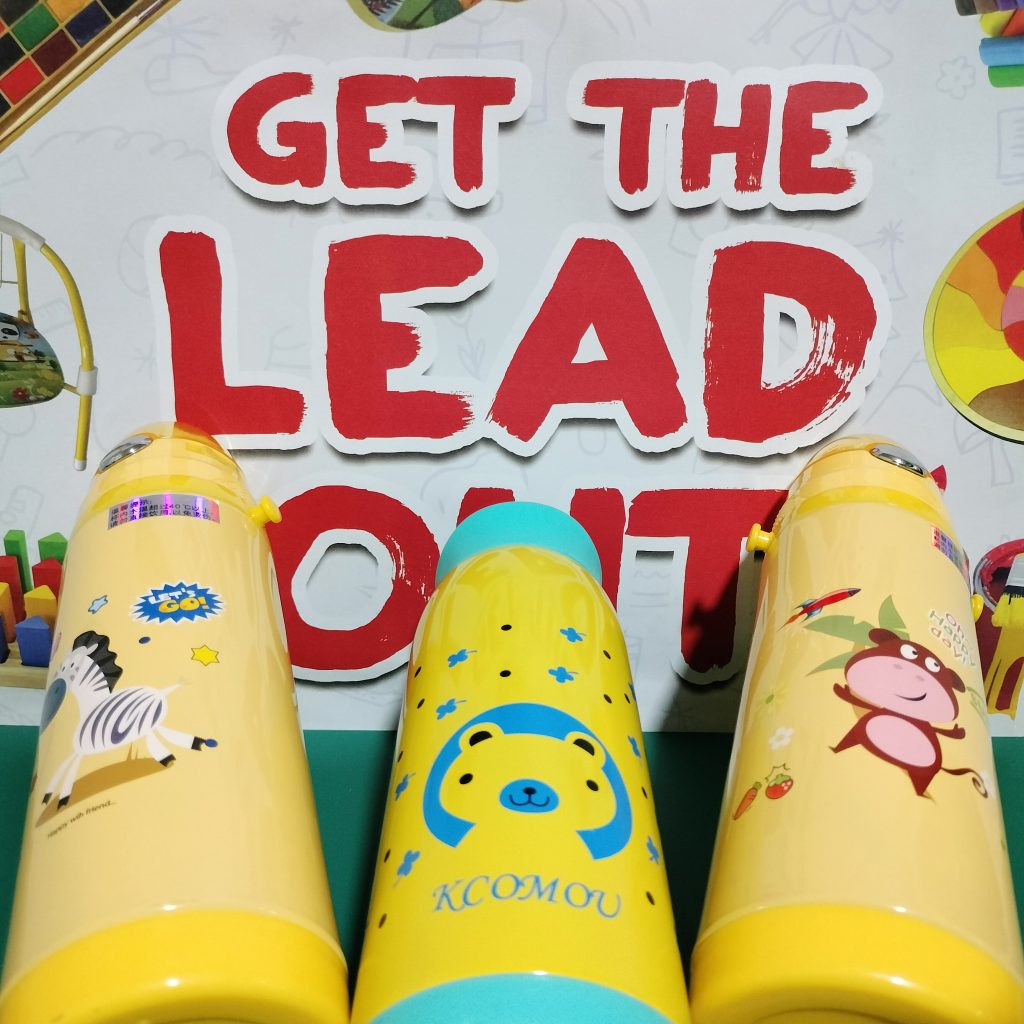
QUEZON CITY — Environmental and health watchdog group EcoWaste Coalition has detected lead, a toxic chemical banned in paints, in more stainless steel water bottles or tumblers featuring cute animal characters that are very attractive to children.
The group uncovered lead way above the 90 parts per million (ppm) maximum limit on the yellow paint in the exterior part of the sampled water containers in violation of the DENR Administrative Order 2013-24, or the Chemical Control Order (CCO) banning lead in the manufacture of paints and similar surface coatings.
To protect children from this potential source of lead exposure, the EcoWaste Coalition urged the concerned authorities to recall the lead-painted tumblers and stop their further distribution and sale.
Out of the five new reusable tumblers obtained for P259 to P289 each from a retail store in Caloocan City, three were found coated with a yellow paint that can be classified as a lead paint, or a paint with lead exceeding the 90 ppm limit.
The yellow paint of the tumbler with a monkey character contained 17,250 ppm of lead, while those with zebra and bear images had 15,220 ppm and 12,410 ppm, respectively. The group used an X-Ray Fluorescence (XRF) device to analyze the paint for lead content.
The other two tumblers passed the 90 ppm limit: a pink one with a lion image and a yellow one with a tiger, indicating that colorful reusable water bottles can be decorated with paints that meet the regulatory standard.
The labeling information on the box of the tumblers is written in foreign characters. It is not known if the samples that failed the 90 ppm limit provided any lead hazard warning, or if those which passed made any assurance of being “lead-free” or “lead-safe.”
The use of lead paint, particularly on articles intended for kids like the analyzed water bottles, is absolutely unacceptable, the EcoWaste Coalition emphasized, as lead is toxic if ingested and can cause adverse health problems.
As explained by the group, the surface paint will chip over time with repeated use of the tumbler. The lead on the paint may end up being ingested by the user, especially by a child who is unaware of the health risks.
“Lead exposure can have serious consequences for the health of children,” according to the World Health Organization (WHO). “At high levels of exposure to lead the brain and central nervous system can be severely damaged causing coma, convulsions and even death. Children who survive severe lead poisoning may be left with permanent intellectual disability and behavioral disorders.”
“At lower levels of exposure that cause no obvious symptoms, lead is now known to produce a spectrum of injury across multiple body systems. In particular, lead can affect children’s brain development, resulting in reduced intelligence quotient (IQ), behavioral changes such as reduced attention span and increased antisocial behavior, and reduced educational attainment,” the WHO said.
As further said by WHO, “lead exposure also causes anemia, hypertension, renal impairment, immunotoxicity and toxicity to the reproductive organs. The neurological and behavioral effects of lead are believed to be irreversible.”
The EcoWaste Coalition, a non-profit group advocating for a zero waste and toxics-free society, is pushing for a total ban on hazardous chemicals in toys, school supplies, and other children’s products, and for such commodities, locally manufactured or imported, to be duly tested and labeled. The group supports the mandatory disclosure of chemicals in product (CiP) information to enable consumers to make informed choices.
